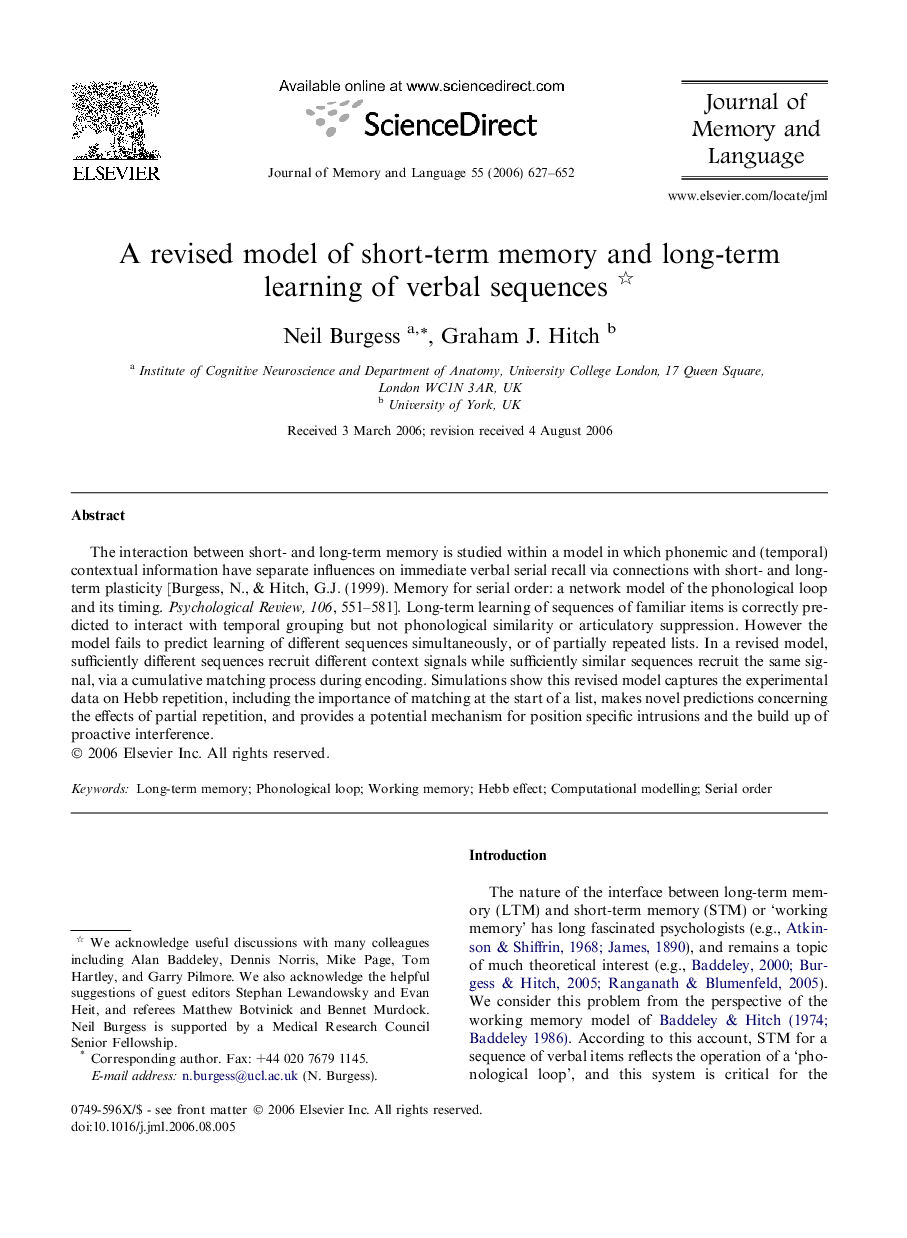| Article ID | Journal | Published Year | Pages | File Type |
|---|---|---|---|---|
| 10459792 | Journal of Memory and Language | 2006 | 26 Pages |
Abstract
The interaction between short- and long-term memory is studied within a model in which phonemic and (temporal) contextual information have separate influences on immediate verbal serial recall via connections with short- and long-term plasticity [Burgess, N., & Hitch, G.J. (1999). Memory for serial order: a network model of the phonological loop and its timing. Psychological Review, 106, 551-581]. Long-term learning of sequences of familiar items is correctly predicted to interact with temporal grouping but not phonological similarity or articulatory suppression. However the model fails to predict learning of different sequences simultaneously, or of partially repeated lists. In a revised model, sufficiently different sequences recruit different context signals while sufficiently similar sequences recruit the same signal, via a cumulative matching process during encoding. Simulations show this revised model captures the experimental data on Hebb repetition, including the importance of matching at the start of a list, makes novel predictions concerning the effects of partial repetition, and provides a potential mechanism for position specific intrusions and the build up of proactive interference.
Related Topics
Life Sciences
Neuroscience
Cognitive Neuroscience
Authors
Neil Burgess, Graham J. Hitch,
